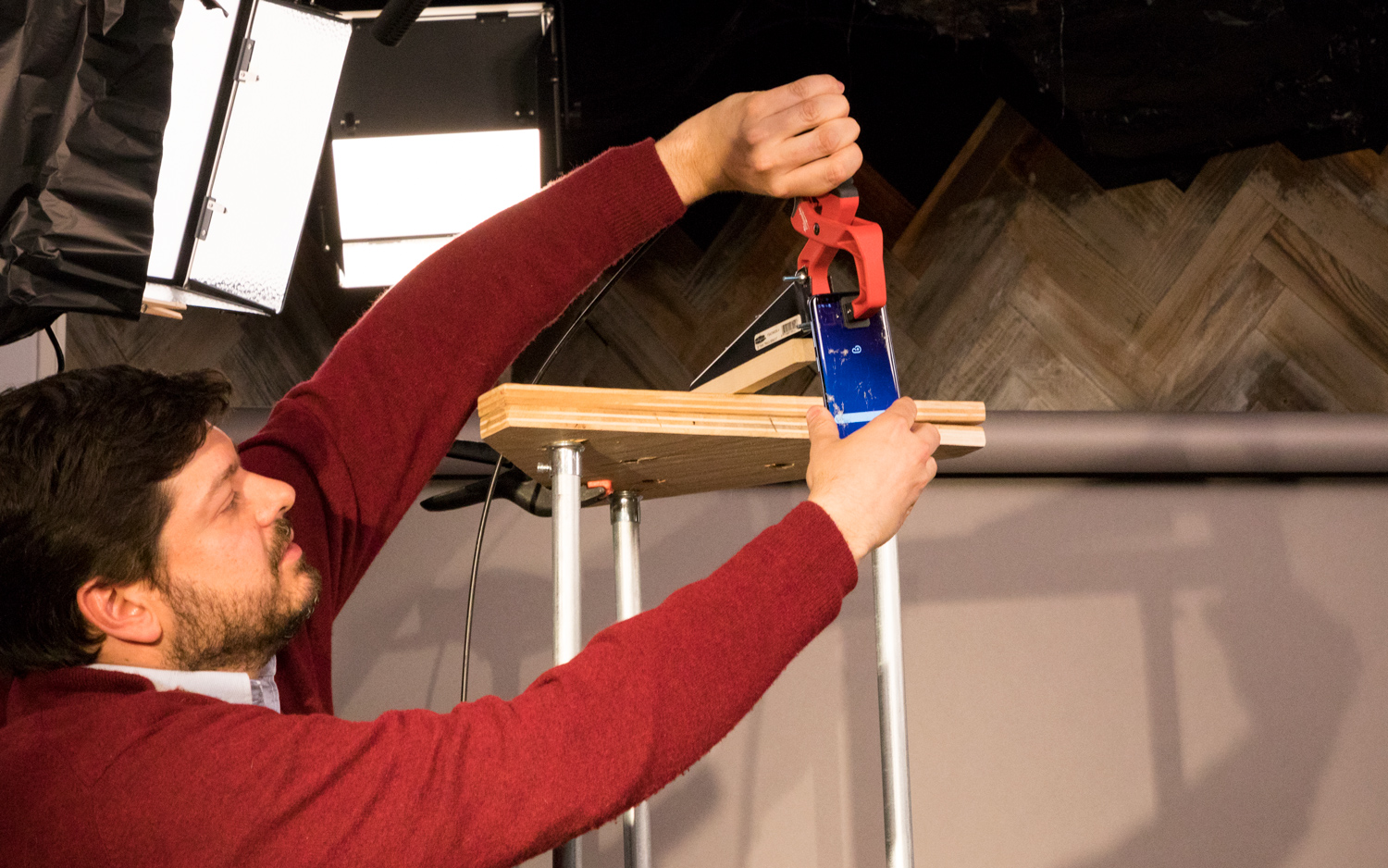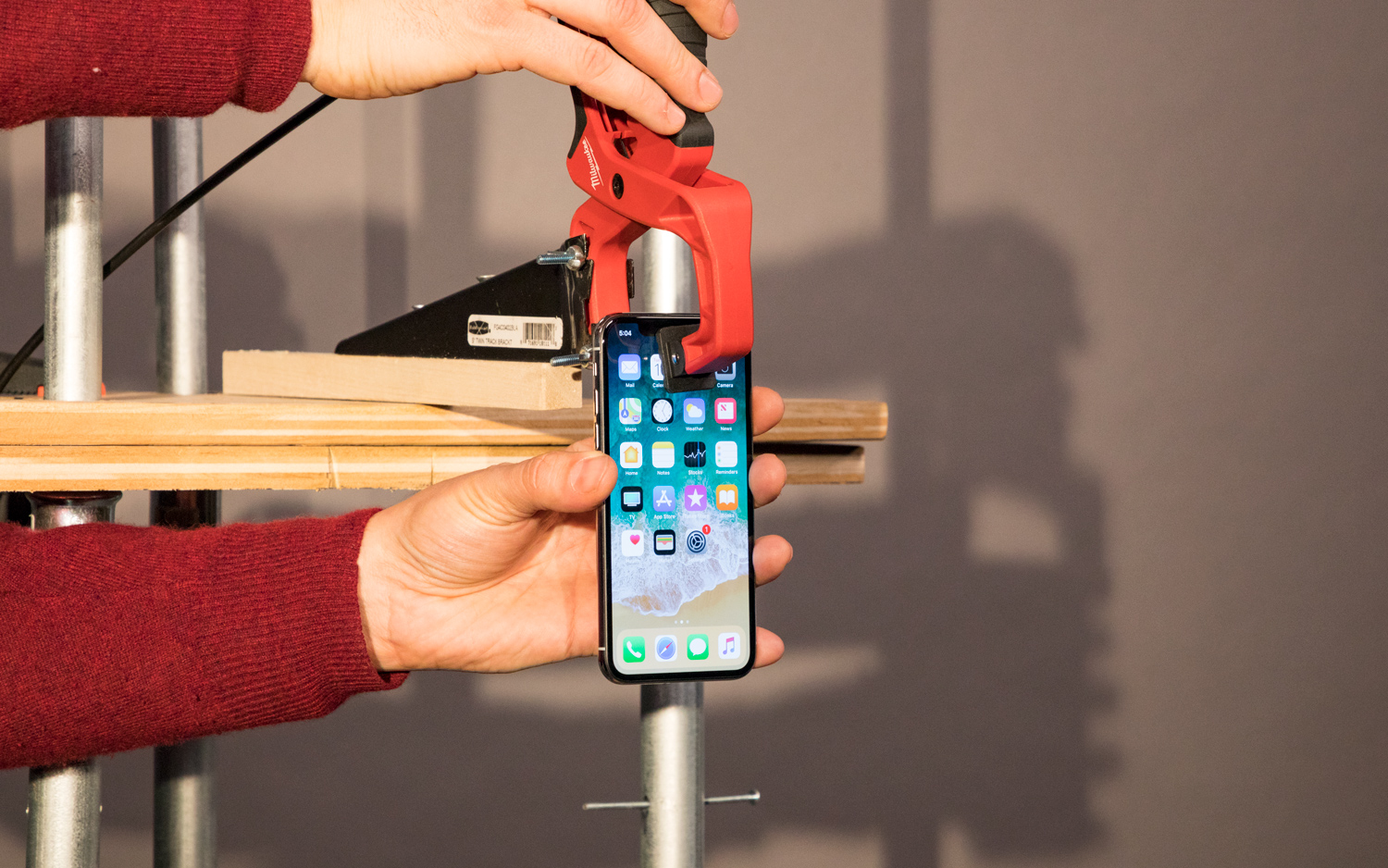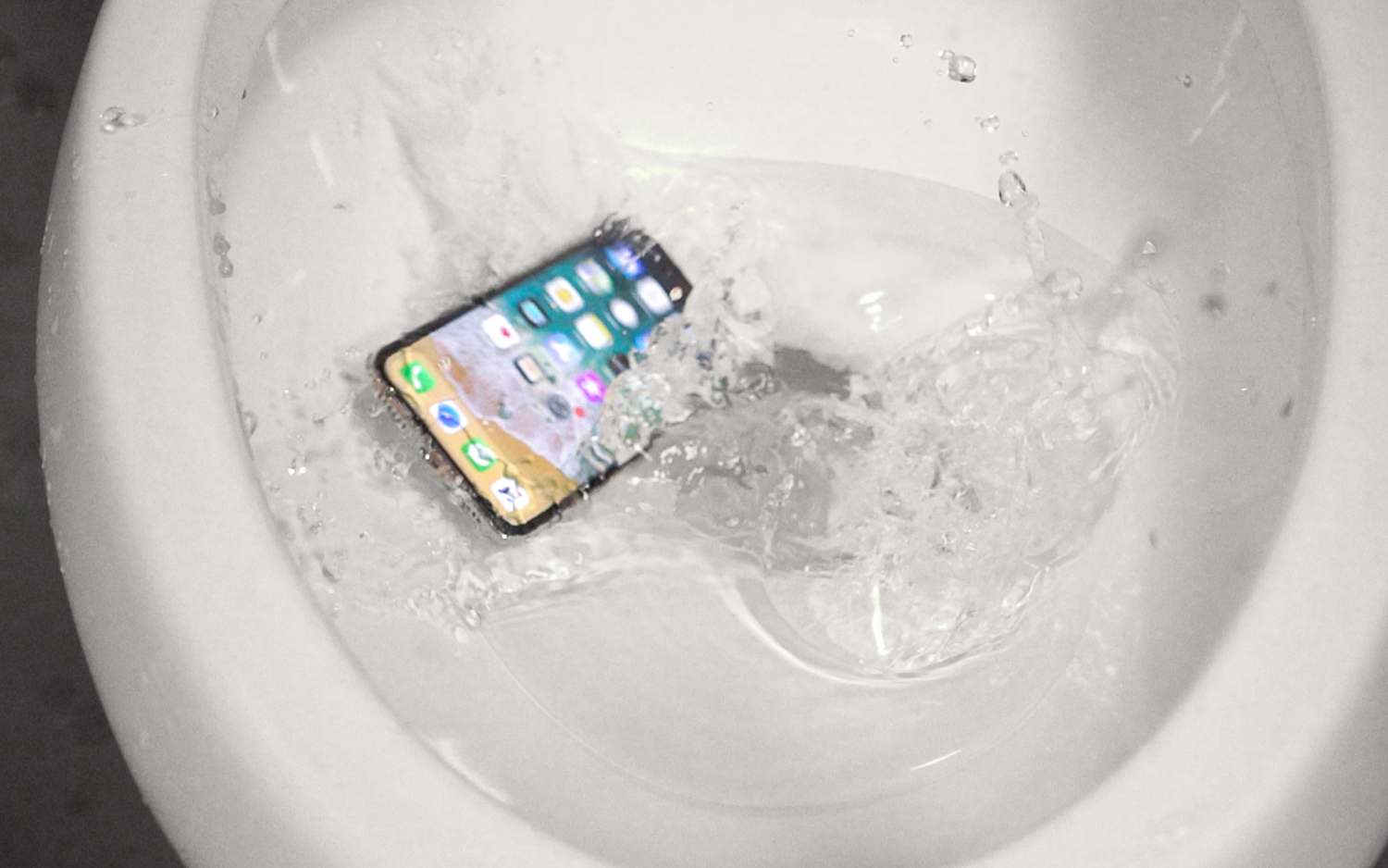How We Dropped 12 of the Top Phones to Name a Winner
The methodology behind our first-ever Smartphone Toughness Tests.

When a smartphone slips out of your hand, there’s no way of telling how it will land when it finally hits the ground. For our first ever Smartphone Toughness Tests, we strived to take as much of the randomness out of the process as possible.
We decided to drop 12 of the top phones both on their faces and on their edges, onto surfaces of increasing hardness. But what’s the best way to drop a phone?
Meet Dropbot 5000

That’s why we built the Dropbot 5000; this machine let us drop phones from consistent heights onto different materials. The top of the Dropbot has two attachments. The first has a quick-release clamp that holds a phone or tablet vertically, which opens when someone pulls the release cable. The second attachment is a platform that drops like a trapdoor when someone pulls its release cable.
In setting up the tests, we discovered that while the pincer attachment worked reliably, the platform attachment dropped phones in such a way that they would rotate mid-air, and thus would not reliably land on their faces.
Ultimately, we decided to use the clamp attachment for the edge drops, but used our own hands for the face drops, to ensure the phones would land on their faces, or as close to as possible.
Initially, we were going to drop the phones onto low-pile carpet, then wood, then concrete, but after seeing that nothing happened when a phone landed on carpet, we decided to forego that round.
For the wood test, we had the phones land on the Dropbot’s base, which is made of 0.75-inch plywood. For the concrete test, we poured a 12 x 12-inch slab that was 0.75 inches in thickness.
Testing Rounds
In all, there were seven total drops in our testing, spread out over four rounds.
For the first round, we dropped each phone, face-first, onto wood from 4 and 6 feet.
The second round involved dropping the phone from a height of 4 feet onto a concrete pad. For this test, we dropped the phone first on its edge, and then on its face.
For the third round, we also dropped the phone onto concrete, but this time, it was from a height of 6 feet. Here, too, we dropped it first on its edge, and finally onto its face.
Lastly, we dropped the phones—holding them vertically—from a height of 4 feet into a water-filled toilet.
Scoring Methodology

After each drop, we recorded the damage to the phone. If a phone was rendered unusable — the screen totally shattered, for instance — then we stopped dropping it.
Each drop was worth a maximum of 5 points; if a phone made it through all of the rounds unscathed, it would earn 35 points.
The more severe the damage per drop was, the more points were deducted. So, for example, if no damage occurred, the phone would receive 5 points; if there was light scuffing or scratches, the phone would receive 4 points; moderate damage was worth 3 points. Heavy damage was worth 2 points, and severe damage worth 1 point.
If a phone was deemed unusable after a given drop, it would earn no points, and would not undergo any subsequent test. For example, following the 6-foot edge drop onto concrete, the iPhone SE’s display still worked, but the glass was so broken, that we considered it too damaged to use safely.
We also decided to penalize phones if they died early, but this lessened with each subsequent round. So, if a phone was unusable following the 6-foot edge drop, it was penalized 10 percent. If it died in the 6-foot face drop, it was penalized 5 percent. And if it died when dropped into the toilet, it lost 2.5 percent.
After tallying the total number of points for each round, and calculating any penalties, we then divided the total score by 3.5, to put the toughness score on a 10-point scale.
What We Learned

Overall, we believe that our testing methodology was sound, but there are ways that we plan on improving the tests to achieve more consistent results. First, we are going to continue to modify the Dropbot to achieve more consistent and repeatable impact angles.
Second, the toilet test left room for error, as we could not consistently have phones land in the bowl in the exact same spot. Moreover, a mere splash in the toilet was not enough to cause lasting damage to any of the phones--even the Moto Z2 Force came back to life after it dried out--so a more rigorous test is warranted.
If you have any suggestions as to how we can improve our current tests, or what other tests we should perform, please let us know in the comments below.
Sign up to get the BEST of Tom's Guide direct to your inbox.
Get instant access to breaking news, the hottest reviews, great deals and helpful tips.

Michael A. Prospero is the U.S. Editor-in-Chief for Tom’s Guide. He oversees all evergreen content and oversees the Homes, Smart Home, and Fitness/Wearables categories for the site. In his spare time, he also tests out the latest drones, electric scooters, and smart home gadgets, such as video doorbells. Before his tenure at Tom's Guide, he was the Reviews Editor for Laptop Magazine, a reporter at Fast Company, the Times of Trenton, and, many eons back, an intern at George magazine. He received his undergraduate degree from Boston College, where he worked on the campus newspaper The Heights, and then attended the Columbia University school of Journalism. When he’s not testing out the latest running watch, electric scooter, or skiing or training for a marathon, he’s probably using the latest sous vide machine, smoker, or pizza oven, to the delight — or chagrin — of his family.
